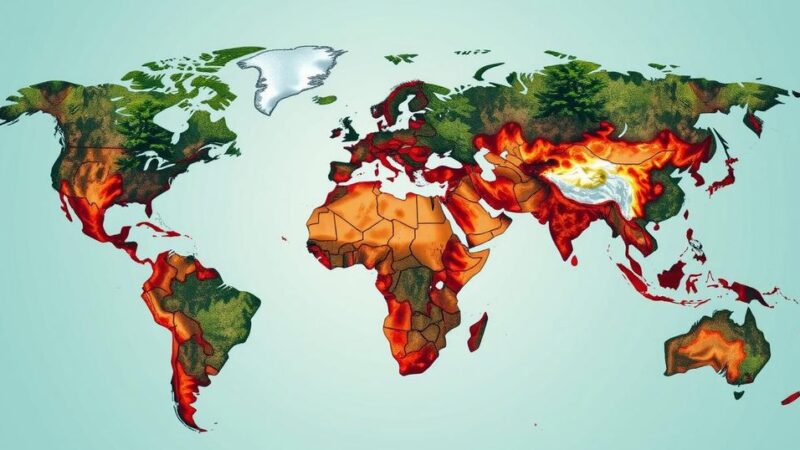In 2024, the world recorded its warmest year on record, with temperatures exceeding previous levels by 2.32 degrees Fahrenheit. Antarctic sea ice extent reached its second-lowest coverage, while ocean heat content recorded an all-time high. Global tropical cyclone activity remained near average, emphasizing the need for urgent action against climate change.
According to an analysis from NOAA’s National Centers for Environmental Information (NCEI), 2024 has been officially recorded as the planet’s warmest year ever, surpassing prior records. This year has witnessed significant historic heat, with Antarctic sea ice coverage reaching its second-lowest level on record. Earth’s average temperature in 2024 was reported to be 2.32 degrees Fahrenheit (1.29 degrees Celsius) above the 20th-century average, marking it as the highest global temperature since record-keeping began in 1850.
Regionally, Africa, Europe, North America, Oceania, and South America recorded their highest temperatures ever, while Asia and the Arctic experienced their second warmest year. The past decade alone has seen all of the ten warmest years recorded since 1850. The global temperature in 2024 exceeded pre-industrial levels by 2.63 degrees Fahrenheit (1.46 degrees Celsius). Other scientific organizations, including NASA and the Copernicus Climate Change Service, corroborated NOAA’s findings by recording similar temperature increases.
Additionally, Antarctic sea ice extent averaged 4.00 million square miles in 2024, the second lowest recorded. The maximum extent recorded in September was 6.59 million square miles, while the minimum in February was 830,000 square miles— both ranking as second lowest. Arctic sea ice extent also remained low, averaging 4.03 million square miles, which is the seventh lowest on record. Furthermore, the upper ocean heat content achieved a record high, indicating that the oceans are absorbing 90% of excess heat.
In terms of tropical cyclone activity, 2024 saw 85 named storms worldwide, close to the 1991-2020 average of 88. Forty-two of these attained tropical cyclone strength, and a notable four reached Category 5 on the Saffir-Simpson hurricane wind scale. The global accumulated cyclone energy was approximately 21% below the average for the same period.
The climate report for 2024 highlights alarming trends in global warming and its impacts as analyzed by NOAA scientists. The data reveals unprecedented temperature surges and significant declines in polar ice coverage, underscoring the urgency of addressing climate change. By documenting these trends over the years, NOAA provides essential insights that augment the understanding of long-term climate patterns and the immediate need for action. The report serves as a critical resource for researchers, policymakers, and the public, illustrating the interconnectedness of various climate indicators, including temperature anomalies and ocean health. Understanding these dynamics is vital for developing strategies aimed at mitigating climate change and adapting to its consequences.
The findings presented in NOAA’s 2024 global climate report underscore the magnitude of climate change’s impact, with 2024 marking the warmest year on record and significant declines in sea ice. The data reveals that nearly all regions across the globe experienced unprecedented heat, a concerning sign of ongoing global warming. As scientists from various organizations corroborate these findings, the need for immediate and comprehensive climate actions becomes increasingly critical. The report serves as a substantial call to action for all stakeholders in addressing one of the most pressing issues of our time.
Original Source: www.noaa.gov







